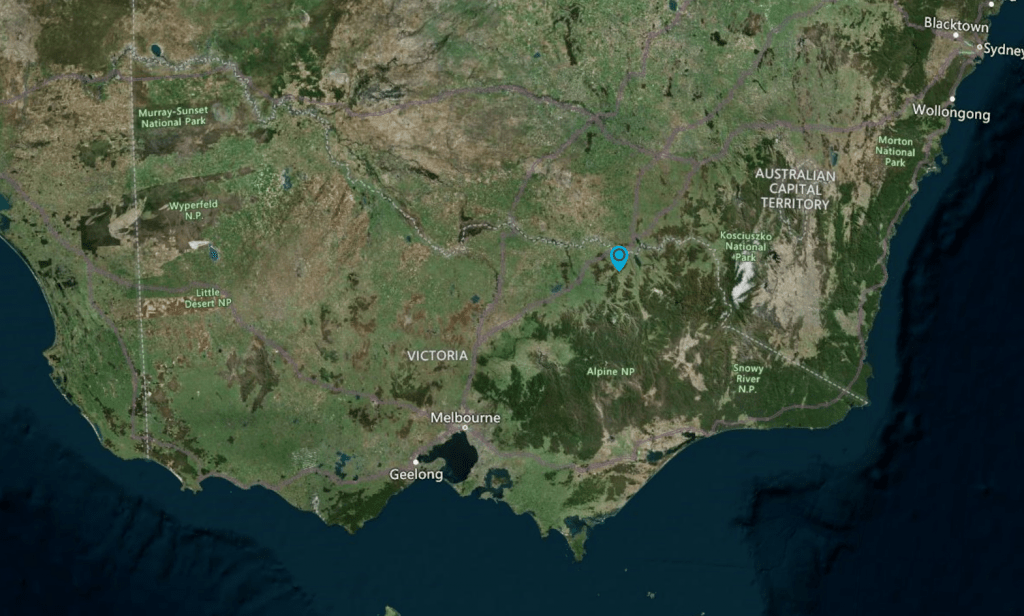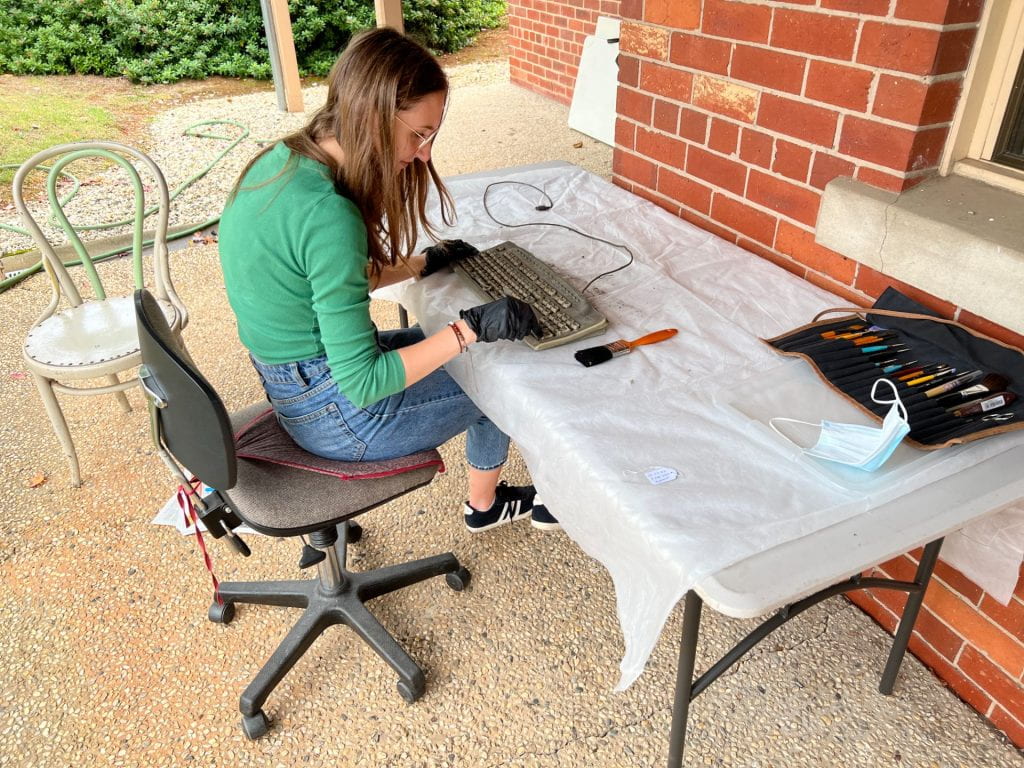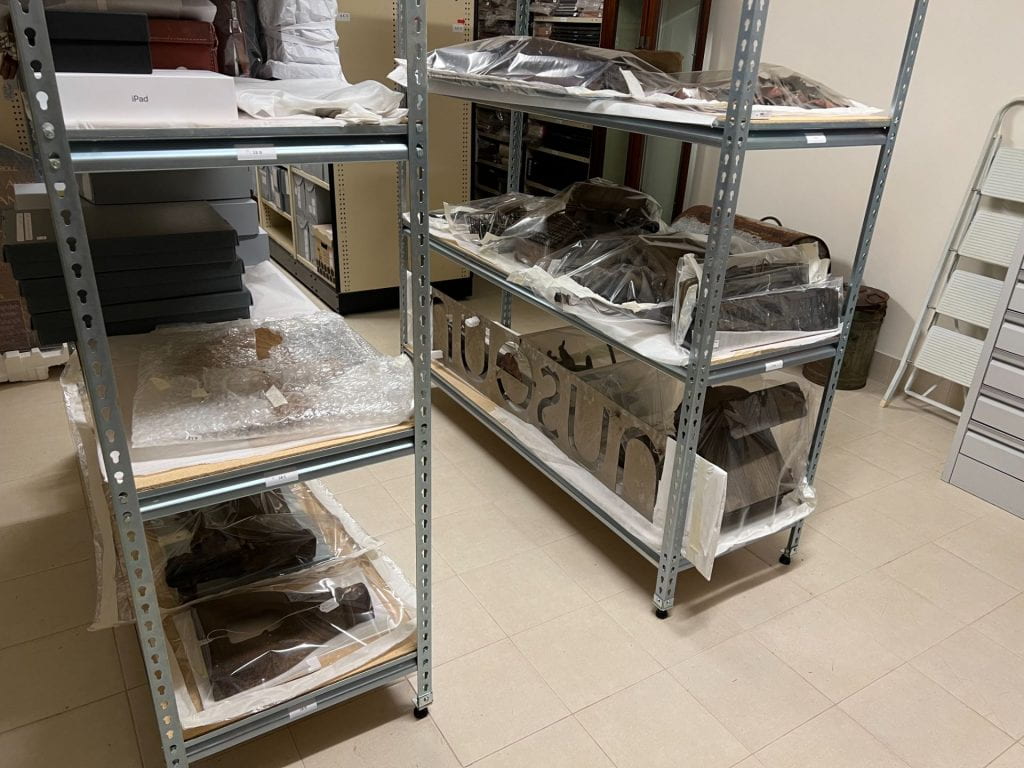
Yackandandah Museum Fire Project
In 2006, the small country town of Yackandandah in north-eastern Victoria lost precious cultural heritage when its museum was damaged by fire. In 2021, Grimwade Masters students Maddy Fraser, Joshua Loke and Samantha Rogers won a Willem Snoek Conservation Award to support a project aimed at assisting the local community and Yackandandah & District Historical Society (YDHS) to document items salvaged from the fire. Their work will also contribute to the creation of an exhibition narrating the story through the burned collection items. Samantha Rogers outlines the project here.
At the beginning of 2021, Joshua Loke, Maddy Fraser and I were among the cohort enrolled in RESPECT (CUMC90027) as part of our Master of Cultural Materials Conservation studies. In this subject, student conservators are trained in the importance of engaging in open, respectful and ongoing dialogue with community stakeholders when planning and carrying out management and treatment of cultural materials. As part of the subject, we listened to the views of representatives of various cultural and artistic communities on issues around the preservation of their cultural material.

Susan Reynolds of YDHS, who has had a long relationship with the Grimwade Centre, spoke to the students about the Yackandandah Museum. She told us about the fire and invited interested students to partner with the Historical Society in helping to make their plans for an exhibition a reality. Joshua, Maddy and I decided that we would like to take up this opportunity to provide assistance to a small regional museum while simultaneously developing our skills. Robyn Sloggett (Grimwade director) helped to put us in touch with one another, and we then proceeded to make contact with Susan Reynolds and Trevor Matthews from YDHS, eventually travelling out to Yackandandah to visit in person.
The overarching aim of the project was to create an exhibition detailing the devastating effects of the 2006 fire and showcasing the damaged items that Yackandandah Museum salvaged from the debris. The fire, which started through an electrical fault in a neighbouring building, had spread to the interior of the old Bank of Victoria building (1860) where the museum was housed, damaging all historical exhibits and old bank furnishings. The 1850s cottage behind the bank building was, thankfully, untouched by the flames.

The burned materials range from a warped and corroded bath that was found in an out room of the original bank building, to charred pieces of the original teller’s desk and counter. There was also a wheelchair once owned by the Haig family, who had a tailor’s shop in the building after the bank was closed in the 1890s and later sold the property to YDHS, and the metal internal elements of a piano believed to also belong to them. YDHS has a large photographic record of these items that was created prior to the fire. One of the important narratives waiting to be told here was the story of the community efforts that went into extinguishing the fire, salvaging the objects and recovering from disaster. Community advocacy allowed the historic building to be preserved and refurbished in consultation with a heritage architect. The items salvaged from the debris of the fire were collected and housed under the veranda of the collection storage building.

After a consultation with Robyn Sloggett, we decided to make an application to the Copland Foundation, which provides grants to support the management, preservation and interpretation of historic collections, with a special interest in historic houses. The Bank of Victoria building had layers of history relevant to the early goldrush settlements in Indigo Shire and the early colonisation of Yackandandah from the 1850s onward. The project was deemed to be a good fit with the Copland Foundation’s mission, and we were awarded a grant. Later, we also successfully applied for a Willem Snoek Conservation Award at The University of Melbourne.

Stage 1 of the project, funded by this award, was carried out in April 2022. We travelled to Yackandandah where we went through the collection of burned materials. The items were catalogued, photographed, lightly cleaned and wrapped when possible. Items that could fit were placed within the museum’s collection storage area. Bulkier items were spread across the wider veranda to prevent crowding.
The cataloguing of items allowed us to experience the rich history and storytelling offered by members of the YDHS who came to visit and discuss the project. Museum volunteers were a delight to talk to and we greatly appreciated the Yackandandah hospitality.

Stage 2 will enable both an oral history and storytelling research element to be carried out later in 2022, as well as a design workshop aimed at creating a plan for the look and feel of the exhibition. These activities will include community consultation with YDHS and the wider Yackandandah community. We will collaborate on exhibition narratives and design planning to help create an exhibition that appropriately interprets not only the fire, but also the thoughts and feelings of the community around the fire and recovery process.

The story of the 2006 museum fire encompasses not only the horror of losing valuable Yackandandah cultural heritage, but also how important it is to have clear disaster recovery procedures. The case of the Yackandandah Museum demonstrates that disaster recovery is possible; even when cultural materials sustain serious damage, their stories need not necessarily be lost. The story of survival and recovery from the 2006 fire adds a further layer to the local history of the Yackandandah community.